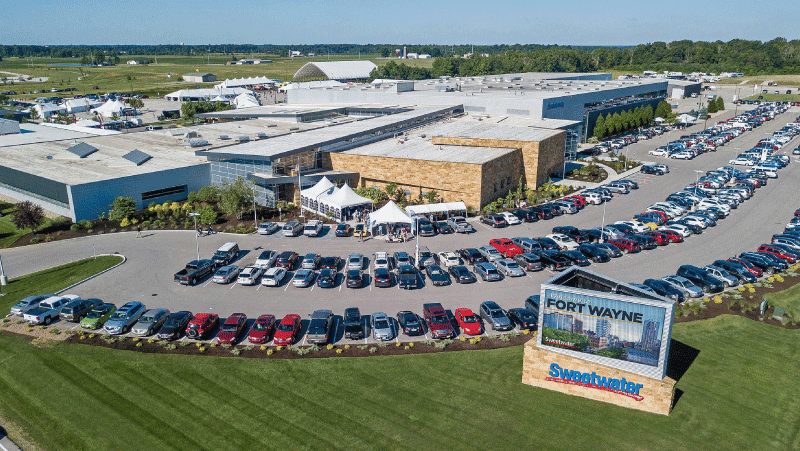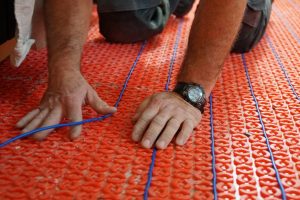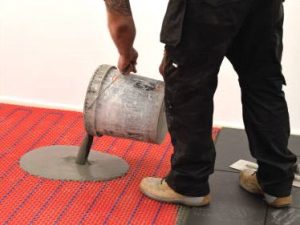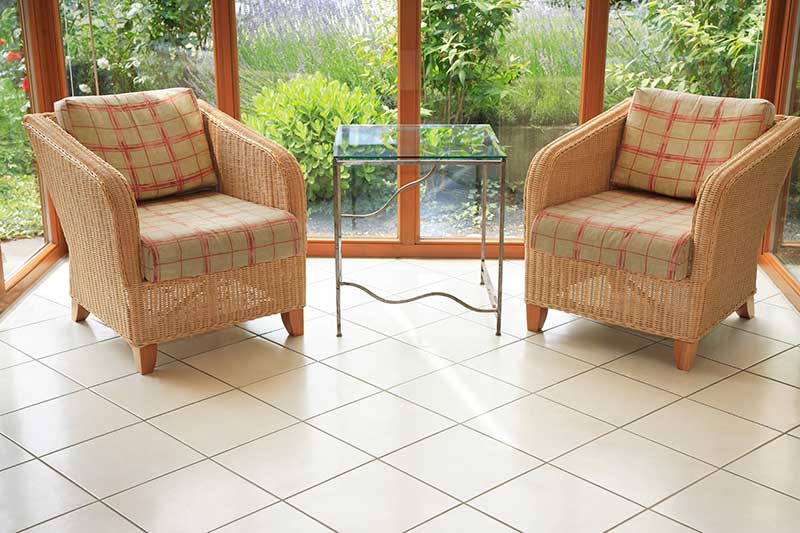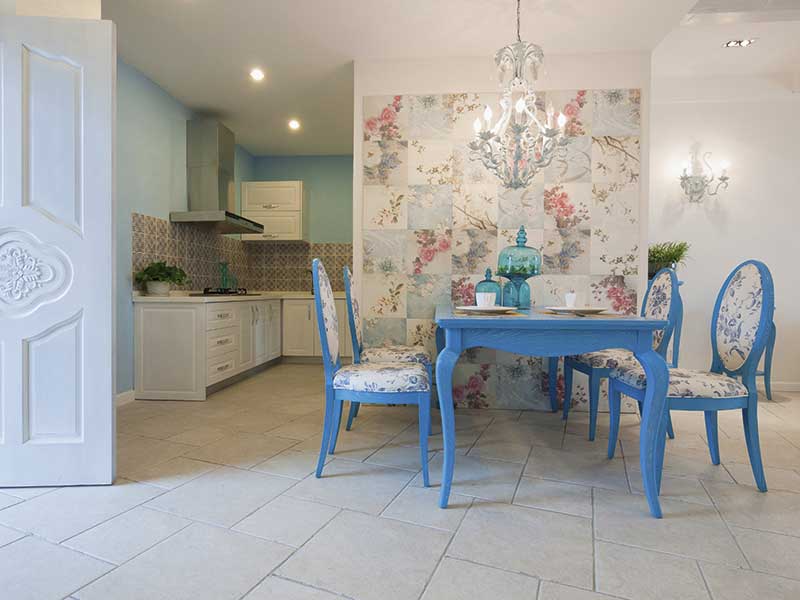In order to be viable as investments, commercial properties need to be economical to construct, have relatively low maintenance costs, and should provide comfortable surroundings for the tenants. Providing heat and air conditioning will be a major consideration affecting the occupants, and of the two, heat is the most expensive element to supply.
For many years, HVAC has been the primary source of temperature regulation in most office, retail sales, and manufacturing facilities. However, electric radiant floor heating is now being recommended by engineers as a primary or supplemental source of heat in commercial and industrial units. There are many benefits of using radiant floor heating, including:
- Lower operating costs
- Flexible installation options
- Efficient, clean, and quiet heat
This article will discuss the main factors that are driving engineers and architects to specify this type of heating as the solution to difficult heating challenges, such as:
- High ceilings
- Floors exposed to the outside
- Areas with high air infiltration
- Large expanses of glass
Significant advances in technology over the last 25 years have made electric radiant floor heating an affordable and commonsense alternative to HVAC and baseboard heating.
5 Critical Considerations for Heating a Commercial Building
Residential applications have standardized wall heights and few openings that are constantly exposed to the open air. However, a commercial building can present the engineer or architect with many issues affecting the proper delivery of heat to the building.
- Large delivery doors that are open all day
- Varying ceiling heights
- Atrium rooms filled with glass
- Office spaces above unheated areas
- Entrance foyers with revolving doors
- Wide open areas without walls to contain the heat
There is also the issue of air quality for businesses that must operate around paints, solvents, and vehicles with exhaust. The extra ventilation required for these types of buildings will increase the amount of heat loss experienced. Addressing these concerns as well as the concerns listed below will be part of a well-developed plan for a commercial heating system.
1. Windows And Heat Loss
Compared with other materials, glass offers little resistance to the transfer of heat. A typical insulated wall with 2×4 framing will have an R-value of 13-15, while a window in that same wall has an R-value of 2. Modern commercial architecture contains a large percentage of glass on the exterior for aesthetics and also to allow light into the building. Designing a system that accounts for the loss of heat while at the same time not interfering with usable floor space is a challenge.
2. Poorly Insulated Ceilings
New commercial building construction will have to conform to current insulation standards in the roof/ceiling which varies between R-38 and R-39, depending on the area of the country you live in. However, in older buildings, this will not be the case. Heat rises naturally, so inadequate ceiling insulation will let much of your heat escape and can increase your heating bills between 45-50%. Adding blown-in insulation to attic areas is the first step to overcoming this area of heat loss.
3. Operational Expenses
Regardless of which type of heat system is used in the building, electric (radiant floor, HVAC or baseboard), hot water or gas, there is a cost associated with the monthly operation as well as annual maintenance. These maintenance costs will include replacing parts or equipment as it ages, updating annual warranties and regular servicing requirements.
4. Noise
In an office environment or retail sales setting, maintaining a low noise level is necessary for optimum productivity. The engineer needs to consider how loud fan noises will affect the overall environment, especially if the need is for supplemental heat in a room that cannot be supplied by the primary system.
5. Heating Source Reliability
Every component of the heating system needs to be considered when determining its overall reliability. If the system is hot water, the pipes may be good for decades, but how long will the pumps operate before needing to be replaced? In a HVAC system, eventual leaks of the refrigeration coolant will be a cause for downtime. Electric baseboards are easy to replace, but the work will need to be done by an electrician who may not be available when the piece of equipment stops working.
Why is Electric Radiant Floor Heating the Most Effective Solution for Commercial Properties?
You have a lot of choices when it comes to providing heat for your building, but they are not all equal. In addition, if you are replacing an existing system, your options may be further limited due to construction constraints. Electric radiant floor heating systems are an excellent solution for both new construction and remodeling.
- There are no fans blowing air and spreading dust and allergens throughout the building.
- Radiant floor systems evenly heat a room thereby reducing cold and hot spots which can be bad for your health.
Low Cost
These systems are competitively priced with other solutions in the marketplace and are economical to operate. Each area can be zoned with its own thermostat so that you are only heating rooms when they are being used instead of heating the whole building all day long. The system only uses full power until the floor reaches the desired temperature, then the power consumption is reduced to 50% in order to maintain it. The initial heat-up power can be further reduced by 50% if insulation board is installed with the system.
No Maintenance
Electric radiant floor heating has no moving parts to break down and uses no liquids that need to be replaced. The electric radiant floor heating system is virtually maintenance-free.
Highly Reliable
The last thing a commercial building needs in the winter is for the heat to stop working. People can only take so much discomfort in the workplace and being cold is a deterrent to productivity. Radiant floor heating will work as long there is electricity supplied to the building. There are no pumps or fans or valves that can fail. Simply set the thermostat and go.
Easy Installation
A professional could probably be utilized in the installation of the radiant floor heating system, but it is easy enough for an experienced DIYer to accomplish. The system uses either a peel-and-stick mat or self-adhesive grid, heat cable, leveling compound and a thermostat. The ease of installation makes it a great solution for providing additional heat in areas that the primary system can’t address.
The Best Radiant Floor Heating Solution for Commercial and Industrial Buildings
Electric radiant floor heating systems were developed and improved by Warmup over 25 years ago. Our desire is to be the best provider of electric radiant floor systems by delivering consistent top-notch products and world-class customer service.
Click here for all of your specifying needs. We look forward to serving you.
